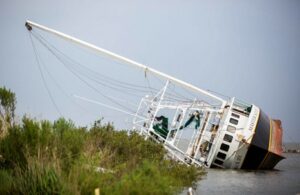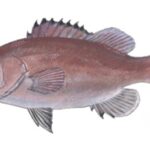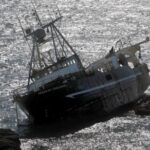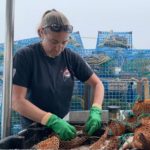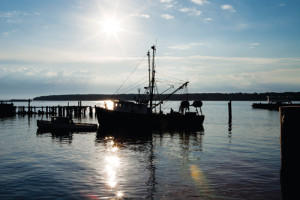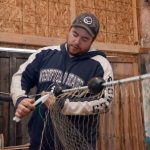Tag Archives: Snow crab
Snow crab prices could be clawed back
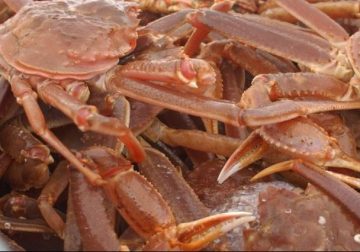 Halfway around the world there’s an uneasiness that may land this year’s Newfoundland snow crab industry in troubled waters. While the announced increase in price between the province’s harvesters and processors this year appears to have somewhat offset concerns about a drastic drop in Newfoundland snow crab quotas, key Japanese buyers remain uncertain about paying a high price through the season. The minimum price per pound for snow crab this year for harvesters was set at $4.39 — the highest price ever in this province — by the Standing Fish Price Setting Panel, which chose the harvesters’ proposed price over the processors’ offer of $4.10. John Sackton, a longtime North American seafood market analyst and president and publisher of SeafoodNews.com, said Japanese buyers find themselves in an uneasy situation. He said their normal buying process — in which the buyers like to work on a single-established price — has been disrupted. click here to read the story 22:35
Halfway around the world there’s an uneasiness that may land this year’s Newfoundland snow crab industry in troubled waters. While the announced increase in price between the province’s harvesters and processors this year appears to have somewhat offset concerns about a drastic drop in Newfoundland snow crab quotas, key Japanese buyers remain uncertain about paying a high price through the season. The minimum price per pound for snow crab this year for harvesters was set at $4.39 — the highest price ever in this province — by the Standing Fish Price Setting Panel, which chose the harvesters’ proposed price over the processors’ offer of $4.10. John Sackton, a longtime North American seafood market analyst and president and publisher of SeafoodNews.com, said Japanese buyers find themselves in an uneasy situation. He said their normal buying process — in which the buyers like to work on a single-established price — has been disrupted. click here to read the story 22:35
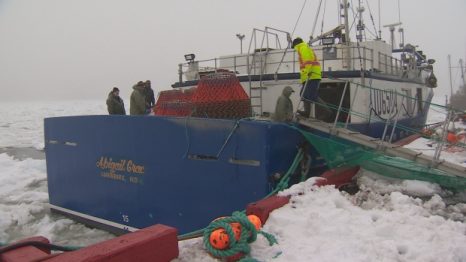
N.L. fishermen worried after double-whammy of snow crab, shrimp announcements
Fishermen in Newfoundland and Labrador say they’re shocked the total allowable catch for snow crab will be slashed 22 per cent this year — and some are relieved it isn’t worse news. “It’s going to be very difficult,” said Nelson Bussey, a fish harvester in Port de Grave, who’s predicting 40 per cent less crab than he caught last year. The quota, announced Monday by the federal department of Fisheries and Oceans, has been set at 35,419 tonnes. Bussey says the cut doesn’t match up with reality. continue reading the story here 09:40
Crab quota cuts are grim news – The news hit just before question period in the House of Assembly Monday afternoon that the federal government is cutting crab quotas by 22 per cent. This was an additional blow after the federal government cut the Area 6 shrimp quota by 63 per cent last week, in response to a declining biomass. Shellfish made up more than 80 per cent of the total landed value of seafood last year, so these kinds of cuts will have a huge economic impact. continue reading the story here 09:46
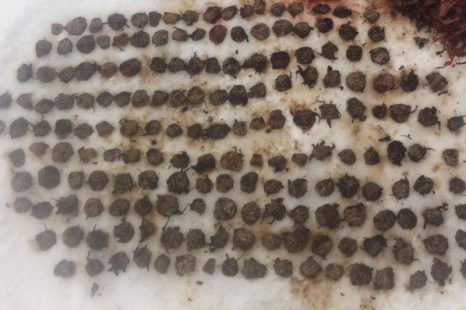
“They (seals) are destroying the crab stocks.” – Bearded seal harvested with a belly full of snow crab in Green Bay
Baie Verte native Danny Dicks recently harvested a bearded seal (square flipper seal) with 181 identifiable female and two male crabs in its stomach. The seal weighed between 200-300 pounds and measured approximately seven feet long. The Pilot spoke with Danny’s brother, Deon about the seal and what it was eating. “Bearded seals are not as common as the harp seals that are usually harvested,” Deon said. “They are much larger and can dive down in the deep water for crab and I’ve even seen them with rocks in their bellies.” “The females are needed to produce,” Deon said. “They (seals) are destroying the crab stocks.” Link 15:21
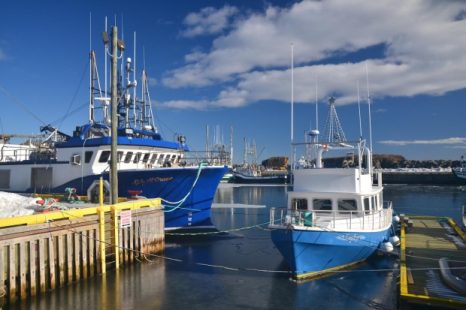
Not what I’m seeing: Crab fisherman thinks stock healthier than scientists say
Port de Grave snow crab fisherman says he’s baffled by a bleak stock assessment recently released by the Department of Fisheries and Oceans. While federal scientists said there has been a whopping 40 per cent decline in the amount of harvestable crab off the coast of Newfoundland and Labrador, Dwight Petten says that doesn’t match what he is seeing on the water. Petten, 51, has been fishing for a quarter century. He and his 27-year-old son own two boats, employ six people and have a 500,000-pound quota which they caught easily in 2016. “We found catch rates the best we’ve ever had, so we’re not seeing what the scientists is saying is happening,” he told the St. John’s Morning Show. Petten, who fishes in Area 3L, from Bonavista to Cape Race, said he is seeing lots of healthy crab, despite the assertion by scientists that there are few small crab to replace the mature stock. continue reading the story here 07:51
Crabbers receiving record prices for low catch
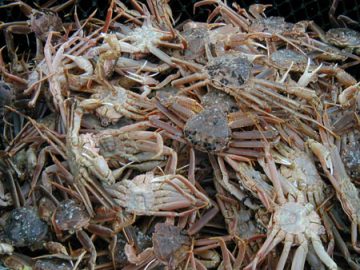 The year’s first red king crab fishery at Norton Sound has yielded 17,000 pounds Alaska crabbers are hauling back pots from the Panhandle to the Bering Sea, and reduced catches are resulting in record prices for their efforts. The year’s first red king crab fishery at Norton Sound has yielded 17,000 pounds so far of its nearly 40,000 pound winter quota for more than 50 local fishermen. The crab, which are taken through the ice near Nome, are paying out at a record $7.75 a pound. A summer opener will produce a combined catch of nearly half a million pounds for the region. Red king crab from Bristol Bay also yielded the highest price ever for fishermen, averaging $10.89 per pound. That catch quota of 8 million pounds was down 15 percent from the previous season. The Bering Sea snow crab fleet has taken 80 percent of its 19 million pound quota, down by nearly half from last year. That’s pushed market prices through the roof, topping $8.30 a pound at wholesale in both the U.S. and Japan, compared to over $5.50 per pound a year ago. continue reading the article here 13:56
The year’s first red king crab fishery at Norton Sound has yielded 17,000 pounds Alaska crabbers are hauling back pots from the Panhandle to the Bering Sea, and reduced catches are resulting in record prices for their efforts. The year’s first red king crab fishery at Norton Sound has yielded 17,000 pounds so far of its nearly 40,000 pound winter quota for more than 50 local fishermen. The crab, which are taken through the ice near Nome, are paying out at a record $7.75 a pound. A summer opener will produce a combined catch of nearly half a million pounds for the region. Red king crab from Bristol Bay also yielded the highest price ever for fishermen, averaging $10.89 per pound. That catch quota of 8 million pounds was down 15 percent from the previous season. The Bering Sea snow crab fleet has taken 80 percent of its 19 million pound quota, down by nearly half from last year. That’s pushed market prices through the roof, topping $8.30 a pound at wholesale in both the U.S. and Japan, compared to over $5.50 per pound a year ago. continue reading the article here 13:56
Alaska Crab fishery faces identity crisis, while Fishermen have a tough time finding snow crab
 Fishermen are having the toughest time in the past five years finding snow crab, according to the Alaska Department of Fish and Game, in Unalaska. The fleet of 60 crab boats had caught 16. 6 million pounds, for 74 percent of the quota in the Bering Sea, ADF&G biologist Ethan Nichols in Unalaska said Monday. But based on the number of crab in an average pot, the catch has plummeted from a peak of 237 to 116 in the most recent weekly tally, he said. The average weight is 1.3 pounds per individual snow crab, he said. continue reading the story here – Crab fishery faces identity crisis. Is it a bairdi Tanner or is it an opilio Tanner snow crab? Or is it something in between, a hybrid? The Bering Sea commercial crab fishery is facing an issue fundamental to identity, and in what fishery which crustaceans can legally appear. In this issue, it’s up to the Alaska Board of Fisheries. Crabbers and their allies in the Pribilof Islands say a hybrid should be considered part of the catch of whatever the fishermen are targeting, whether Tanner bairdi or Tanner opilio. While both have Tanner in their names, the bairdi are commonly known as Tanners, while the typically smaller opilio are called snow crab. continue reading the story here 12:10
Fishermen are having the toughest time in the past five years finding snow crab, according to the Alaska Department of Fish and Game, in Unalaska. The fleet of 60 crab boats had caught 16. 6 million pounds, for 74 percent of the quota in the Bering Sea, ADF&G biologist Ethan Nichols in Unalaska said Monday. But based on the number of crab in an average pot, the catch has plummeted from a peak of 237 to 116 in the most recent weekly tally, he said. The average weight is 1.3 pounds per individual snow crab, he said. continue reading the story here – Crab fishery faces identity crisis. Is it a bairdi Tanner or is it an opilio Tanner snow crab? Or is it something in between, a hybrid? The Bering Sea commercial crab fishery is facing an issue fundamental to identity, and in what fishery which crustaceans can legally appear. In this issue, it’s up to the Alaska Board of Fisheries. Crabbers and their allies in the Pribilof Islands say a hybrid should be considered part of the catch of whatever the fishermen are targeting, whether Tanner bairdi or Tanner opilio. While both have Tanner in their names, the bairdi are commonly known as Tanners, while the typically smaller opilio are called snow crab. continue reading the story here 12:10
Editorial: Sea change
 You might see it at Prosser’s Rock, or in Ochre Pit Cove, or Twillingate. You might see at any one of scores of small ports and wharfs all over the province; sometimes smaller boats, sometimes larger, steaming to port with big loads of snow crab. For years, it has been the high-value backbone of the new fishery: after the failure of the cod fishery, the crab fishery was the big-ticket savior. Sure, there were fewer fish harvesters involved; there were fewer licences than cod, and the bounty wasn’t split among so many. But there were jobs for rural Newfoundlanders and Labradorians, those fishing crab and another valuable species, shrimp, and processing them for market. But the news has turned bad. Batten down the hatches. A rural storm is coming. continue reading the Op-ed here 07:57
You might see it at Prosser’s Rock, or in Ochre Pit Cove, or Twillingate. You might see at any one of scores of small ports and wharfs all over the province; sometimes smaller boats, sometimes larger, steaming to port with big loads of snow crab. For years, it has been the high-value backbone of the new fishery: after the failure of the cod fishery, the crab fishery was the big-ticket savior. Sure, there were fewer fish harvesters involved; there were fewer licences than cod, and the bounty wasn’t split among so many. But there were jobs for rural Newfoundlanders and Labradorians, those fishing crab and another valuable species, shrimp, and processing them for market. But the news has turned bad. Batten down the hatches. A rural storm is coming. continue reading the Op-ed here 07:57
Latest DFO stock assessment unveils a poor outlook for snow crab
 It’s not a pretty picture. In a technical briefing Monday, Darrell Mullowney, lead scientist for snow crab in the NL region for the Department of Fisheries and Oceans (DFO) said the latest stock assessment on snow crab in the Newfoundland and Labrador region shows an overall 40 per cent decline in exploitable biomass from 2015-16. Since 2013, the decline of exploitable biomass has been 80 per cent. Exploitable biomass refers to the crab that are adult, and of legal size — a shell size greater than 95 mm — for commercial fishing. The DFO numbers come from their own trawl surveys — one in fishing zones off the south coast each spring, and the other in northern fishing areas in the fall — as well as from reports from observers on commercial fishing vessels, the log books of the crab fishing fleets, and trap surveys conducted by DFO in inshore areas. The decline in crab stocks, explained Mullowney, is due to two major factors: warming water temperatures and groundfish. continue reading the story here 11:04
It’s not a pretty picture. In a technical briefing Monday, Darrell Mullowney, lead scientist for snow crab in the NL region for the Department of Fisheries and Oceans (DFO) said the latest stock assessment on snow crab in the Newfoundland and Labrador region shows an overall 40 per cent decline in exploitable biomass from 2015-16. Since 2013, the decline of exploitable biomass has been 80 per cent. Exploitable biomass refers to the crab that are adult, and of legal size — a shell size greater than 95 mm — for commercial fishing. The DFO numbers come from their own trawl surveys — one in fishing zones off the south coast each spring, and the other in northern fishing areas in the fall — as well as from reports from observers on commercial fishing vessels, the log books of the crab fishing fleets, and trap surveys conducted by DFO in inshore areas. The decline in crab stocks, explained Mullowney, is due to two major factors: warming water temperatures and groundfish. continue reading the story here 11:04
Alaska’s Bering Sea snow crab quota down 50 percent
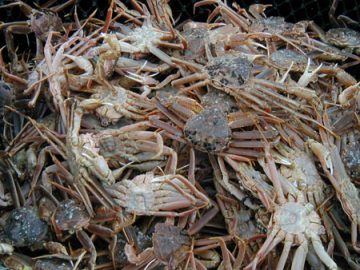 In mixed news for Alaska’s crabbers, the state’s Department of Fish and Game announced the opening of the Bering Sea snow crab season will take place on 15 October, but with an allotted catch that is half that of last season’s. A report released Thursday, 6 October by Fish and Game put the total allowable catch (TAC) for the 2016/17 season at 21.57 million pounds, which would be the fishery’s lowest in 45 years. Around 19.4 million pounds of the TAC will go to the individual fishing quota, with the rest going to the community development quota. “We’ve seen a declining trend since the 2006/7 season,” said Robert J. Foy, the head of NOAA’s “Crab Lab” in Kodiak. Read the rest here 11:44
In mixed news for Alaska’s crabbers, the state’s Department of Fish and Game announced the opening of the Bering Sea snow crab season will take place on 15 October, but with an allotted catch that is half that of last season’s. A report released Thursday, 6 October by Fish and Game put the total allowable catch (TAC) for the 2016/17 season at 21.57 million pounds, which would be the fishery’s lowest in 45 years. Around 19.4 million pounds of the TAC will go to the individual fishing quota, with the rest going to the community development quota. “We’ve seen a declining trend since the 2006/7 season,” said Robert J. Foy, the head of NOAA’s “Crab Lab” in Kodiak. Read the rest here 11:44
Low-Powered LED Lights Can Improve Snow Crab Catchability
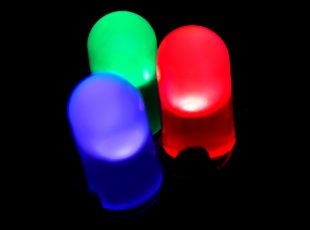 The Atlantic Canada snow crab (Chionoecetes opilio) fishery may have started out as a bycatch fishery over 60 years ago, but today it has become the second most valuable export fishery in Canada. In 2013, The Newfoundland and Labrador snow crab fishery had the honour (rolls eyes) of becoming the 200th fishery to receive Marine Stewardship Council (MSC) certification. Improving the catchability of snow crab, as for any fishery, has garnered significant interest, though can be challenging to achieve. At the fourth International Marine Conservation Congress, PHD candidate Khanh Nguyen, who is based at Marine Institute, Memorial University of Newfoundland, described one way snow crab fisheries can increase catchability – and without spending vast amounts of money redesigning gear. Mr Nguyen’s research has focused on exploiting the snow crab’s biology – specifically its ability to detect and react to lights. A number of marine species are known to be attracted to lights, with some commercial fisheries, such as squid jigging, using lights to lure their prey. Whereas some fisheries use relatively powerful lights, Mr Nguyen’s interest was in the use of low powered, coloured LED lights. Read the article here 09:24
The Atlantic Canada snow crab (Chionoecetes opilio) fishery may have started out as a bycatch fishery over 60 years ago, but today it has become the second most valuable export fishery in Canada. In 2013, The Newfoundland and Labrador snow crab fishery had the honour (rolls eyes) of becoming the 200th fishery to receive Marine Stewardship Council (MSC) certification. Improving the catchability of snow crab, as for any fishery, has garnered significant interest, though can be challenging to achieve. At the fourth International Marine Conservation Congress, PHD candidate Khanh Nguyen, who is based at Marine Institute, Memorial University of Newfoundland, described one way snow crab fisheries can increase catchability – and without spending vast amounts of money redesigning gear. Mr Nguyen’s research has focused on exploiting the snow crab’s biology – specifically its ability to detect and react to lights. A number of marine species are known to be attracted to lights, with some commercial fisheries, such as squid jigging, using lights to lure their prey. Whereas some fisheries use relatively powerful lights, Mr Nguyen’s interest was in the use of low powered, coloured LED lights. Read the article here 09:24
Snow Crab season opens Friday for Area 12, Fishermen expect a strong price.
 ALBERTON — Carter Hutt anticipates there will be a drive on Wednesday morning to get crab boats ready for a season which is scheduled to get underway on Friday. Hutt is president of the 27-member P.E.I. Snow crab Association. He learned soon after a Tuesday afternoon conference call with the Department of Fisheries and Oceans that fishermen on the call agreed unanimously to have the snow crab season for Area 12, which includes P.E.I. boats, commence at 4 a.m. Friday. The opening, however, remains dependent upon favourable ice and wind conditions. Even before the conference call, Hutt was optimistic the season would start Friday. Read the rest here 17:52
ALBERTON — Carter Hutt anticipates there will be a drive on Wednesday morning to get crab boats ready for a season which is scheduled to get underway on Friday. Hutt is president of the 27-member P.E.I. Snow crab Association. He learned soon after a Tuesday afternoon conference call with the Department of Fisheries and Oceans that fishermen on the call agreed unanimously to have the snow crab season for Area 12, which includes P.E.I. boats, commence at 4 a.m. Friday. The opening, however, remains dependent upon favourable ice and wind conditions. Even before the conference call, Hutt was optimistic the season would start Friday. Read the rest here 17:52
Department of Fisheries and Oceans cuts N.L. snow crab quotas for 2016 season
The Department of Fisheries and Oceans has cut the total allowable catch for snow crab in Newfoundland and Labrador this upcoming season by about 13 per cent. Some fishing areas will see quota cuts of more than that — division 3Ps, in the Placentia Bay area, will see a 30 per cent reduction, while most areas of 3K, along the northeast coast, will see a 20 per cent cut. Some areas of 3LNO also face 20 per cent cuts. DFO has set the 2016 total limit at 43,802 tonnes. The first divisions open for fishing on April 4. Link 08:57
this upcoming season by about 13 per cent. Some fishing areas will see quota cuts of more than that — division 3Ps, in the Placentia Bay area, will see a 30 per cent reduction, while most areas of 3K, along the northeast coast, will see a 20 per cent cut. Some areas of 3LNO also face 20 per cent cuts. DFO has set the 2016 total limit at 43,802 tonnes. The first divisions open for fishing on April 4. Link 08:57
Report suggests snow crab in decline
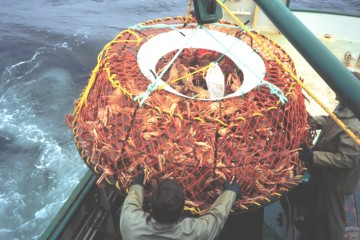 Jamie Rose hopes the numbers are as wrong as he thinks they are. That was the St. Anthony fisherman’s reaction to a snow crab report that was recently released by the Canadian Science Advisory Secretariat. The annual report examined fishing areas 2HJ3KLNOP4R and it paints a bleak future for the upcoming season. The index-based report suggests exploitable biomass – large male crab – has declined to its lowest observed level in the last two decades of study, dropping from a highpoint of nearly 70 in the mid-‘90s to a all time low of around 10. Recruitment appears to have bottomed out. The index level is sitting around three points, which dropped from around 15 over the last five years. Read the rest here 11:26
Jamie Rose hopes the numbers are as wrong as he thinks they are. That was the St. Anthony fisherman’s reaction to a snow crab report that was recently released by the Canadian Science Advisory Secretariat. The annual report examined fishing areas 2HJ3KLNOP4R and it paints a bleak future for the upcoming season. The index-based report suggests exploitable biomass – large male crab – has declined to its lowest observed level in the last two decades of study, dropping from a highpoint of nearly 70 in the mid-‘90s to a all time low of around 10. Recruitment appears to have bottomed out. The index level is sitting around three points, which dropped from around 15 over the last five years. Read the rest here 11:26
Victoria Co. snow crab fishermen could be hit hardest by quota cuts
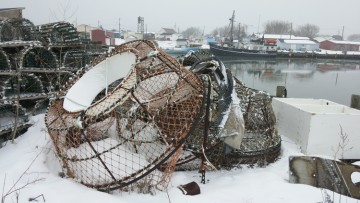 Snow crab fishermen in the waters off Cape Breton are preparing for a leaner season this year, with quota cuts approved or proposed in both the Gulf of St. Lawrence and the Atlantic Ocean. While most fishermen know the fishery is cyclical and they need to take fewer crab when the stock is low, those in Crab Fishing Areas 20 to 22 – which covers the Atlantic side of the island, along the Cabot Trail from Glace Bay to Bay St. Lawrence – are facing a steep cut that could be as high as 45 per cent. What’s more, the subsea cable for the Maritime Link,, Read the article here 17:14
Snow crab fishermen in the waters off Cape Breton are preparing for a leaner season this year, with quota cuts approved or proposed in both the Gulf of St. Lawrence and the Atlantic Ocean. While most fishermen know the fishery is cyclical and they need to take fewer crab when the stock is low, those in Crab Fishing Areas 20 to 22 – which covers the Atlantic side of the island, along the Cabot Trail from Glace Bay to Bay St. Lawrence – are facing a steep cut that could be as high as 45 per cent. What’s more, the subsea cable for the Maritime Link,, Read the article here 17:14
Red crab fishing season underway
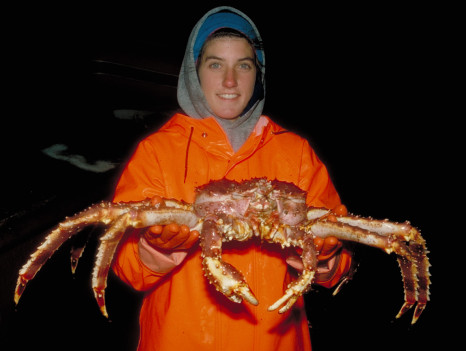 The Bristol Bay red king crab fishing season is underway, and the quota is almost the same as last year’s, at 9.7 million pounds. That’s down slightly from last year, and so is the number of boats. On Tuesday, 58 boats were registered, and a few more are on their way north from Seattle, according to biologist Miranda Westphal of the Alaska Department of Fish and Game, in Unalaska. Last year, 63 crab boats were signed up, she said. The situation is different for another big Bering Sea crab fishery. When fishermen set pots for snow crab in a few months, they will have a lot less to catch. Read the rest here 19:11
The Bristol Bay red king crab fishing season is underway, and the quota is almost the same as last year’s, at 9.7 million pounds. That’s down slightly from last year, and so is the number of boats. On Tuesday, 58 boats were registered, and a few more are on their way north from Seattle, according to biologist Miranda Westphal of the Alaska Department of Fish and Game, in Unalaska. Last year, 63 crab boats were signed up, she said. The situation is different for another big Bering Sea crab fishery. When fishermen set pots for snow crab in a few months, they will have a lot less to catch. Read the rest here 19:11
Snow crab harvest slashed by 40% compared to last season
 Crabbers’ fears of diving quota came true with the third-lowest snow crab harvest limit since 2005. The quota cut represents nearly a third of the entire snow crab harvest’s value last year. Between 2005 and 2014, the average price for Bering Sea snow crab was $1.86 per pound. At 40.6 million pounds, it comes to $50.2 million, or 31 percent of last year’s harvest value.In comparison to recent years, the value loss is even higher. Snow crab prices in the 2010s are the highest they’ve ever been; they haven’t dipped below $1.86 per pound since 2010. Last year, snow crab’s $2.37 per pound,,, Read the rest here 09:14
Crabbers’ fears of diving quota came true with the third-lowest snow crab harvest limit since 2005. The quota cut represents nearly a third of the entire snow crab harvest’s value last year. Between 2005 and 2014, the average price for Bering Sea snow crab was $1.86 per pound. At 40.6 million pounds, it comes to $50.2 million, or 31 percent of last year’s harvest value.In comparison to recent years, the value loss is even higher. Snow crab prices in the 2010s are the highest they’ve ever been; they haven’t dipped below $1.86 per pound since 2010. Last year, snow crab’s $2.37 per pound,,, Read the rest here 09:14
Snow Crab and lobster in hot water! Fond of Snow crab? Hurry up! You may see less of this crustacean on your plate by 2070.
 With the Snow Crab and Lobster Thermal Habitat Changes in the Southern Gulf of St. Lawrence project, funded for one year starting in April 2012, “we wanted to use modelling to study thermal habitat changes in relation to climate change for these to Eastern Canada,” according to Mikio Moriyasu, head of the Snow Crab Section of the Gulf Fisheries Centre, based in Moncton. Read more here 12:41
With the Snow Crab and Lobster Thermal Habitat Changes in the Southern Gulf of St. Lawrence project, funded for one year starting in April 2012, “we wanted to use modelling to study thermal habitat changes in relation to climate change for these to Eastern Canada,” according to Mikio Moriyasu, head of the Snow Crab Section of the Gulf Fisheries Centre, based in Moncton. Read more here 12:41
Japanese all in on Newfoundland’s $4.95 crab price after huge struggle
 Japanese buyers finally accepted en masse an FOB snow crab price of $4.95 (US dollars) from Newfoundland in Canada. At the end of last week, buyers who had resisted accepting that price came around and signed contracts. Read more here 21:00
Japanese buyers finally accepted en masse an FOB snow crab price of $4.95 (US dollars) from Newfoundland in Canada. At the end of last week, buyers who had resisted accepting that price came around and signed contracts. Read more here 21:00

































